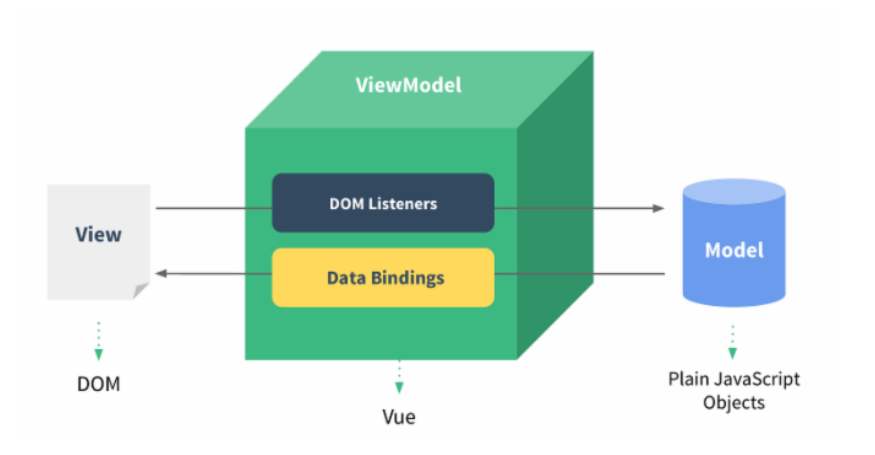 后臺(tái)框架搭建過(guò)程
后臺(tái)框架搭建過(guò)程
等待一段時(shí)間,項(xiàng)目創(chuàng)建完成
1.2.2 App.vue
<router-link?to=”/”>Home</router-link>?|
<router-link?to=”/about”>About</router-link>
</div>
·?antDesign
具體的框架選擇,可以選擇該網(wǎng)站作為參考
FE
拿iview做例子
在main.js中引入iview
import?ViewUI?from?‘view-design’
import?‘view-design/dist/styles/iview.css’
Vue.use(ViewUI)
如果我們需要在一個(gè)css中對(duì)iview進(jìn)行重置,則需要去創(chuàng)建一個(gè)css并且在main.js引入
在assets中創(chuàng)建css/reset.css,在main.js中引入(需要放在UI組件的css的下面)
import?‘./assets/css/reset.css’
yarn add axios
import?axios?from?‘axios’
// 調(diào)用axios的create方法創(chuàng)建一個(gè)新的axios
const?instance?=?axios.create({
// 公共的請(qǐng)求前綴
baseURL:?‘https://some-domain.com/api/’,
// 請(qǐng)求超時(shí)時(shí)間
timeout:?1000,
// 設(shè)置默認(rèn)的header信息
// headers: {‘a’: ‘1’}
})
// 創(chuàng)建axios的請(qǐng)求攔截器(一般設(shè)置的是401的問(wèn)題)
instance.interceptors.request.use(config?=>?{
// 在發(fā)送請(qǐng)求之前做些什么
// 一般配置config中的headers添加token
return?config;
},?error?=>?{
// 對(duì)請(qǐng)求錯(cuò)誤做些什么
return?Promise.reject(error);
});
instance.interceptors.response.use(response?=>?{
// 對(duì)響應(yīng)數(shù)據(jù)做點(diǎn)什么
return?response;
},?error?=>?{
// 對(duì)響應(yīng)錯(cuò)誤做點(diǎn)什么
return?Promise.reject(error);
});
// 最后將實(shí)例導(dǎo)出,未來(lái)作為模塊使用
export?default?instance
1.3.3.接口配置
·?GET /books/:id 獲取某本書的信息
·?POST /books ?新建一本書{title: “”,ISBN: “”,author: “”,price: “”}
·?PUT /books/:id 更新書本全部?jī)?nèi)容{title: “”,ISBN: “”,author: “”,price: “”}
·?PATCH /books/:id 更新書本部分內(nèi)容{title: “”,ISBN: “”,author: “”,price: “”}
·?DELETE /books/:id 刪除某本書
·?POST /login{username: ”,password: ”}
// 引入axios的實(shí)例
import?axios?from?‘@/utils/server’
/*
請(qǐng)求的函數(shù)最終返回的一定是一個(gè)Promise對(duì)象(axios.xxx())
*/
// 獲取很多圖書信息
/* {
page: 1,
limit: 10
} */
export?const?getBooks?=?params?=>?axios.get(‘/books’, {params})
// 獲取某一本書
export?const?getBook?=?id?=>?axios.get(`/books/${id}`)
// 創(chuàng)建一本書
export?const?postBook?=?data?=>?axios.post(‘/books’,?data)
// 更新一本書
export?const?putBook?=?(id,?data)?=>?axios.put(`/books/${id}`,?data)
export?const?patchBook?=?(id,?data)?=>?axios.patch(`/books/${id}`,?data)
// 刪除一本書
export?const?deleteBook?=?id?=>?axios.delete(`/books/${id}`)
src/api/user.js
import?axios?from?‘@/utils/server’
export?const?login?=?data?=>?axios.post(‘/login’,?data)
1.3.4? 路由配置
·?監(jiān)控頁(yè)
·?工作臺(tái)
·?表單頁(yè)面
·?基礎(chǔ)表單
·?高級(jí)表單
·?列表頁(yè)面
·?基礎(chǔ)列表
·?用戶列表
·?搜索頁(yè)面
·?文章列表
·?項(xiàng)目列表
// 這里的相關(guān)path沒(méi)有按要求寫,只是個(gè)例子
const?routes?=?[
{
path:?‘/Dashboard’,
component: Layout,
children: [
{
path:?‘主控臺(tái)’,
}, {
path:?‘監(jiān)控頁(yè)’
}, {
path:?‘工作臺(tái)’
}
]
}, {
path:?‘/表單頁(yè)面’,
component: Layout,
children: [
{
path:?‘基礎(chǔ)表單’
}, {
path:?‘高級(jí)表單’
}
]
}
]
src/router/Dashboard.js
import?Layout?from?‘Layout路徑’
export?default?{
path:?‘/Dashboard’,
redirect:?‘/Dashboard/主控臺(tái)’,
component: Layout,
children: [
{
path:?‘主控臺(tái)’,
component: ()?=>?import(‘組件路徑’)
}, {
path:?‘監(jiān)控頁(yè)’,
component: ()?=>?import(‘組件路徑’)
}, {
path:?‘工作臺(tái)’,
component: ()?=>?import(‘組件路徑’)
}
]
}
src/router/表單頁(yè)面.js
import?Layout?from?‘Layout路徑’
export?default?{
path:?‘/表單頁(yè)面’,
redirect:?‘/表單頁(yè)面/基礎(chǔ)表單’,
component: Layout,
children: [
{
path:?‘基礎(chǔ)表單’,
component: ()?=>?import(‘組件路徑’)
}, {
path:?‘高級(jí)表單’,
component: ()?=>?import(‘組件路徑’)
}
]
}
這個(gè)時(shí)候我們就可以在router/index.js中引入對(duì)應(yīng)的路由模塊
import?Dashboard?from?‘Dashboard.js’
import?表單頁(yè)面?from?‘表單頁(yè)面.js’
const?routes?=?[
Dashboard,
表單頁(yè)面
]
如果我們還有新增的菜單,我們可以繼續(xù)
1.?新建文件src/router/菜單.js
2.?在對(duì)應(yīng)的文件中配置對(duì)應(yīng)的路由
import?Layout?from?‘Layout路徑’
export?default?{
path:?‘/一級(jí)菜單路徑’,
redirect:?‘/一級(jí)菜單路徑/二級(jí)菜單路徑’
component: Layout,
children: [
{
path:?‘二級(jí)菜單路徑’,
component: ()?=>?import(‘組件路徑’)
}
]
}
3.?把這個(gè)對(duì)象在src/router/index.js中引入
import?Dashboard?from?‘Dashboard.js’
import?表單頁(yè)面?from?‘表單頁(yè)面.js’
import?菜單?from?‘菜單.js’
const?routes?=?[
Dashboard,
表單頁(yè)面,
菜單
]
1.3.4.1 添加路由后自動(dòng)渲染菜單
export?const?routes?=?[
//…
]
在對(duì)應(yīng)的菜單組件中,引入對(duì)應(yīng)的routes
在渲染時(shí),我們發(fā)現(xiàn),缺少必要的信息,例如
import?Layout?from?‘Layout路徑’
export?default?{
path:?‘/一級(jí)菜單路徑’,
component: Layout,
meta: {
title:?“一級(jí)菜單”,
icon:?“ios-xxx”
},
children: [
{
path:?‘二級(jí)菜單路徑’,
component: ()?=>?import(‘組件路徑’),
meta: {
title:?“二級(jí)菜單”
}
},
{
path:?‘二級(jí)菜單路徑(不需要渲染到菜單)’,
component: ()?=>?import(‘組件路徑’),
meta: {
title:?“二級(jí)菜單”,
hidden:?true
}
}
]
}
{
“title”:?“”,
“icon”:?“”
}
這些自定義信息,我們可以添加到meta中
src/components/Sider.vue
<template>
<Menu?:theme=”theme2″?:active-name=”$route.path”>
<!– 根據(jù)頂級(jí)路由生成Submenu –>
<template?v-for=”parent in routes”>
<Submenu?:name=”parent.path”?:key=”parent.path”?v-if=”!parent.meta.hidden”>
<template?slot=”title”>
<Icon?:type=”parent.meta.icon”?/>
{{parent.meta.title}}
</template>
<!– 根據(jù)children生成MenuItem –>
<template>
<MenuItem?:key=”child.path”?:name=”parent.path + ‘/’ + child.path”?v-for=”child in parent.children”?:to=”parent.path + ‘/’ + child.path”>{{child.meta.title}}</MenuItem>
</template>
</Submenu>
</template>
</Menu>
</template>
<script>
import?{routes}?from?‘@/router’
export?default?{
data?() {
return?{
routes
}
}
}
</script>
– dashboard
– 總控臺(tái).vue
– 監(jiān)控頁(yè).vue
– 工作臺(tái).vue
– 表單
– 普通表單.vue
– 高級(jí)表單.vue
如果是屬于路由組件中的普通組件
– components
– 路由組件名(文件夾)
– 普通組件.vue
– dashboard.js
– 表單.js
在每個(gè)js中結(jié)構(gòu)都是相同的
demo.js
export?default?{
namespaced:?true,
state: {},
mutations: {},
actions: {}
getters: {},
modules: {}
}
再把模塊js放置在src/store/index.js中
index.js
import?模塊?from?‘模塊路徑’
const?store?=?new?Vuex.Store({
state: {},
mutations: {},
actions: {},
getters: {},
modules: {
模塊
}
})
如果我們要用到請(qǐng)求,那么在對(duì)應(yīng)模塊中引入,并在action里調(diào)用
如果我們想要在vuex中使用Message、router等相關(guān)的對(duì)象
直接引入即可
import?{Message}?from?‘view-design’
import?router?from?‘@/router’
在vue中有一些東西是一樣
this.$store?===?new?Vue.Store()
this.$router?===?new?VueRouter()
文/云和數(shù)據(jù)高級(jí)H5開(kāi)發(fā)工程師
